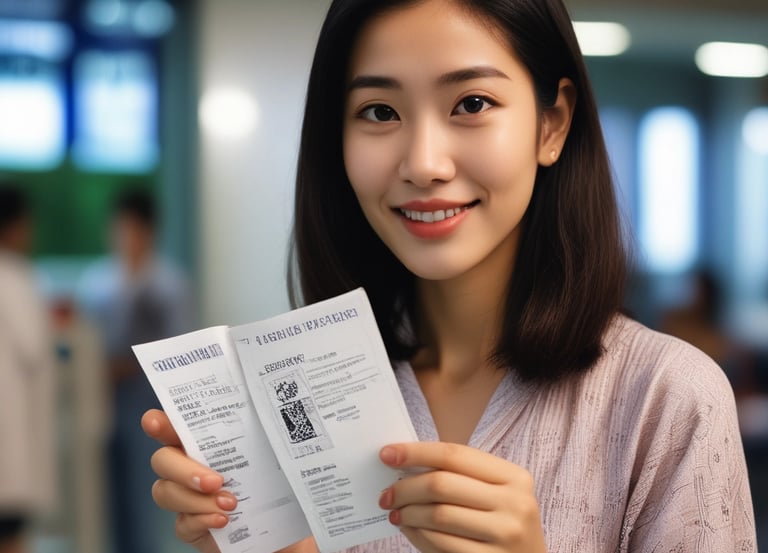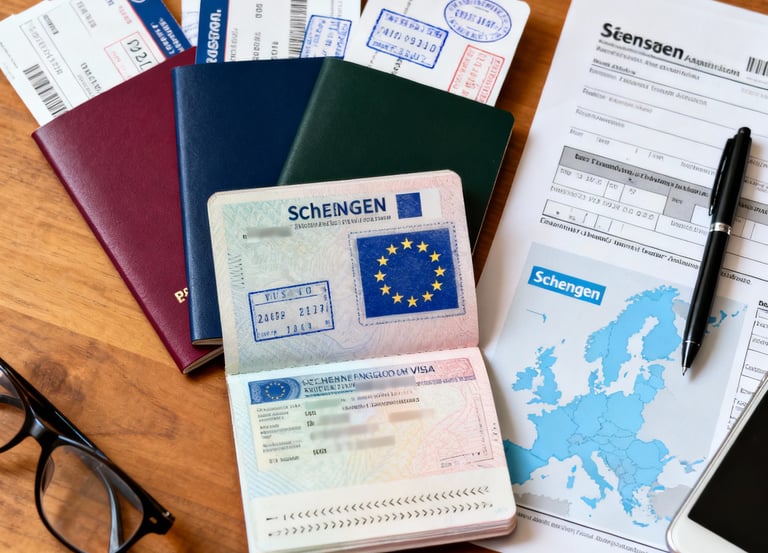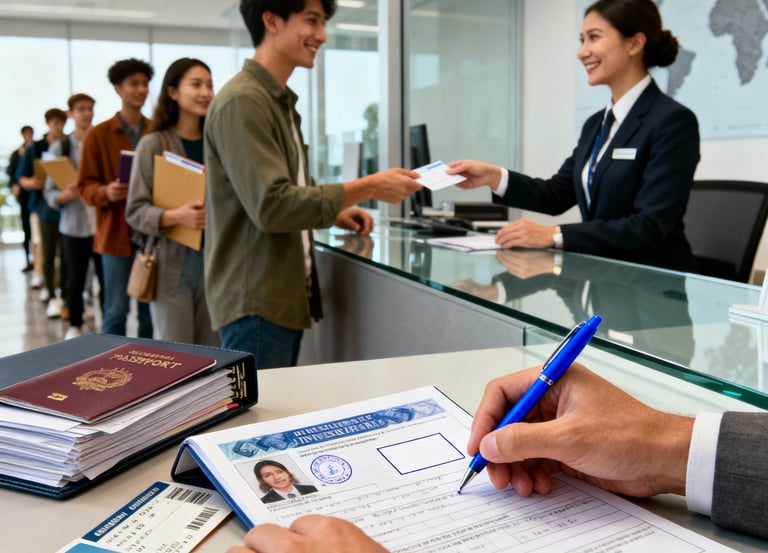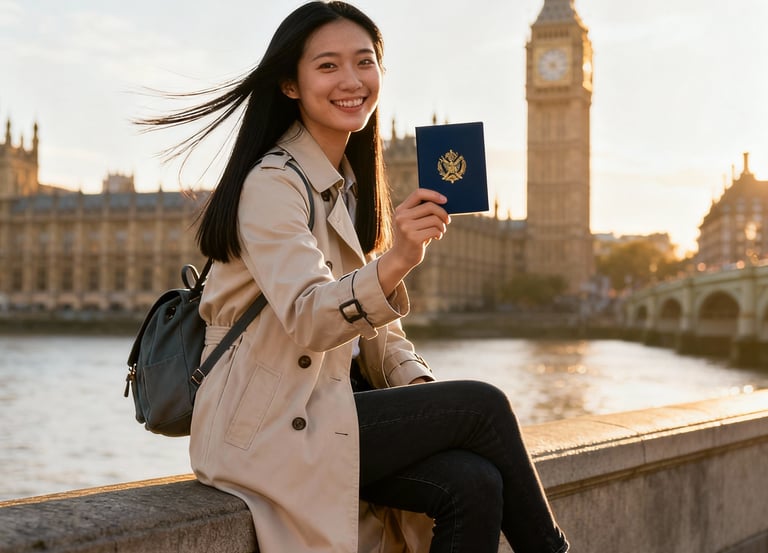Book your dream escape to Europe

Visa Made Easy
Your step-by-step guide to navigating European visas for Asian women travelers.
Visa Basics
What is a Schengen visa?
A Schengen visa allows travel within 26 European countries for short stays up to 90 days.
How to apply for it?
You need to gather required documents, fill out an application, and schedule an appointment at the embassy/consulate of the country which you enter first
What documents are needed?
Essential documents include a valid passport, travel insurance, proof of accommodation, and financial means for your stay.
Standard decision time (Type C short‑stay): 15 calendar days from the date you submit your application and biometrics. This is set by the EU Visa Code and applies regardless of where you apply.
Possible extension: Up to 45 calendar days if the consulate needs extra documents or additional checks.
Earliest you can apply: Up to 6 months before your trip (9 months for seafarers).
Recommended buffer: Book your appointment and apply at least 6–8 weeks before travel to account for appointment availability, peak seasons, and mailing/courier time for passport return.
Notes specific to location and season:
Appointment wait times vary by country and season. In peak periods (roughly April–September and December), it can be harder to get slots—plan earlier.
Many embassies/consulates in these locations use visa centers (e.g., VFS/BLSS). Processing time starts after biometrics and file submission are accepted, not when you first book an appointment.
Other visa types:
Long‑stay (national D visas) are not Schengen visas; timelines are set by the specific country and can take several weeks to a few months.
What to do next:
Check the specific embassy/consulate or its visa center page for current appointment availability and any locally stated processing times.
Make sure your documentation is complete; missing items commonly trigger the 45‑day extended timeline.
Schengen visa processing times (applied in Singapore, Hong Kong, Indonesia, or the Philippines)
Can I extend my visa?
Extensions are possible under specific circumstances, but you must apply before your current visa expires.
Visa Services
Expert guidance for navigating European visa applications and requirements.


Common pitfalls in Schengen visa applications (and how to avoid them)
Applying too late
Pitfall: Assuming it’s instant. Appointments plus processing can exceed 4–6 weeks in peak seasons.
Fix: Book early and apply 6–8 weeks before travel; up to 6 months ahead is allowed (9 months for seafarers).
Wrong consulate choice
Pitfall: Applying to any Schengen country arbitrarily.
Rule: Apply to the country of main destination (most nights). If equal, apply to first point of entry.
Fix: Map nights per country; include an itinerary with nights count to justify the chosen consulate.
Incomplete or inconsistent itinerary
Pitfall: Vague plans or mismatched dates across forms, bookings, and cover letter.
Fix: Provide a day-by-day itinerary with addresses and contact info; ensure dates match all documents.
Unverifiable or provisional bookings
Pitfall: Submitting “on-hold” tickets without locator codes, or cancellable hotel vouchers that the consulate can’t verify.
Fix: Use verifiable flight reservations (PNR/booking refs) and hotel confirmations with booking numbers; ensure all traveler names are listed.
Insufficient travel insurance
Pitfall: Wrong coverage or duration.
Rule: Minimum €30,000 medical coverage, valid for all Schengen states, covering entire stay including entry/exit days, with repatriation.
Fix: Upload the policy certificate and coverage schedule; extend coverage a few buffer days.
Bank statements and financial proof issues
Pitfall: Large unexplained deposits, low ending balance, or missing statements.
Fix: Provide 3–6 months of statements, explain any unusual transactions in a brief note, and meet daily subsistence thresholds (varies by country; generally €50–120/day). Include employment letter and payslips where applicable.
Missing ties to home country
Pitfall: The officer can’t see reasons you’ll return.
Fix: Include employment letter with approved leave, proof of business ownership, study enrollment, property/lease documents, family ties, and return ticket reservation.
Incorrect photo or biometrics assumptions
Pitfall: Wrong photo specs or assuming prior biometrics are still valid.
Fix: Use ICAO-compliant photos (35x45 mm, light background, recent). Biometrics are valid for 59 months, but some posts still require fresh capture—follow local guidance.
Cover letter not included (or poorly written)
Pitfall: No clear purpose or explanation for routing, sponsors, or oddities.
Fix: One-page cover letter: trip purpose, itinerary, funding, accommodation, travel history, and any special notes (e.g., invitation, conference).
Invitation/sponsor documentation gaps
Pitfall: Vague invitations or missing sponsor proof.
Fix: If visiting friends/family or attending events, include an invitation letter with host’s ID/residence, address, relationship, trip dates, and financial responsibility; if sponsored, add host’s bank statements and proof of income. For business, add company invitation and event registration.
Wrong visa category
Pitfall: Applying for tourist when purpose is business/study/medical.
Fix: Match category with purpose; include corresponding documents (e.g., conference tickets, medical appointments, training enrollment).
Travel history and visa copies missing
Pitfall: Not showing prior visas that support credibility.
Fix: Include copies of prior Schengen/US/UK/Canada/Japan visas and entry/exit stamps if available.
Passport validity issues
Pitfall: Passport expiring soon or insufficient blank pages.
Rule: Valid at least 3 months after planned departure, issued within last 10 years, with 2–3 blank pages.
Fix: Renew if needed before applying.
Ignoring minors’ requirements
Pitfall: Missing birth certificates, parental consent, or custody papers.
Fix: Provide notarized parental consent, passports/IDs of parents, and proof of relationship/custody; follow the consulate’s exact forms.
Not aligning accommodation with itinerary
Pitfall: Hotels in one city while itinerary shows another.
Fix: Provide bookings that match dates and locations; include multi-city reservations if moving around.
Assuming the visa center decides
Pitfall: Arguing with VFS/BLS staff or leaving gaps because “they said it’s fine.”
Fact: Only the consulate decides. Visa centers only collect documents.
Fix: Follow the consulate’s checklist precisely, not just the visa center’s summary.
Overstaying or unclear multi-entry need
Pitfall: Requesting multiple entry without justification.
Fix: Ask for the entry type you can justify. If you need multi-entry (e.g., side trip to the UK/Switzerland microstate border crossings), explain and attach bookings.
Language and translation problems
Pitfall: Submitting documents in a language the consulate doesn’t accept.
Fix: Provide certified translations as required by that consulate.
Not tracking processing timelines
Pitfall: Missing passport collection or travel date overlaps during passport hold.
Fix: Avoid booking nonrefundable travel until visa is issued; monitor tracking; provide a prepaid return courier if allowed.
Ignoring local nuances
Pitfall: Each consulate has its own checklist/additional forms (e.g., photo specs, insurance phrasing, proof of funds thresholds).
Fix: Use the exact checklist from the consulate or its visa center page for your location and visa category.










